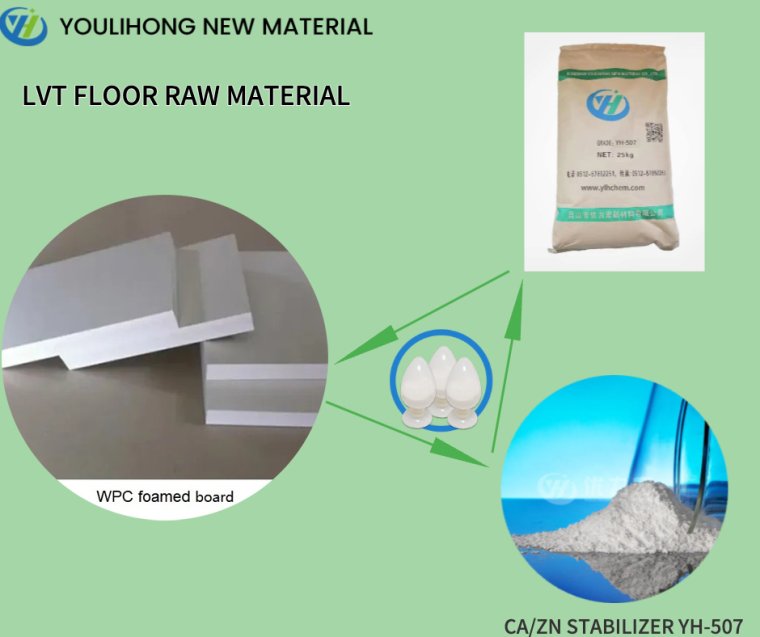- This topic is empty.
-
AuthorPosts
-
2025-07-21 at 9:21 am #4123
In modern homes, factories, and manufacturing plants, stable and consistent electrical voltage is essential for the reliable performance and longevity of electrical equipment. This is where a voltage stabilizer comes into play. Whether you're protecting a high-end appliance or ensuring smooth operation in an industrial production line, understanding how a voltage stabilizer works can help you make smarter equipment and material choices.
This article will explain what a voltage stabilizer is, how it functions, and why it’s important—especially for industries using sensitive machinery and advanced materials like PVC and polymer additives. We'll also explore how material manufacturers like Youlihong New Material Co., Ltd. indirectly benefit from stabilized power environments.

What Is a Voltage Stabilizer?
A voltage stabilizer, also known as an automatic voltage regulator (AVR), is an electrical device designed to maintain a constant output voltage regardless of fluctuations in the input voltage. It protects equipment from overvoltage, undervoltage, and voltage surges, which can cause damage, reduce efficiency, or even lead to equipment failure.
Voltage stabilizers are commonly used with:
-
Home appliances (refrigerators, air conditioners, TVs)
-
Industrial machinery and automation systems
-
Medical devices
-
Laboratory equipment
-
Manufacturing systems involving heat, extrusion, or mixing processes
How Does a Voltage Stabilizer Work?
Voltage stabilizers operate based on electromechanical or electronic regulation principles. When input voltage fluctuates beyond safe levels, the stabilizer automatically adjusts the voltage using internal transformers, servo motors, or semiconductor-based control circuits.
Here’s a simplified breakdown of its function:
-
Sensing the Input Voltage
The stabilizer constantly monitors the incoming voltage. -
Detecting Deviations
If the voltage drops below or rises above the acceptable range, the system detects the deviation instantly. -
Correcting the Voltage
Using internal circuitry—such as tap-changing transformers or buck-boost converters—the stabilizer increases or decreases the voltage accordingly. -
Supplying a Stable Output
The corrected voltage is then supplied to the connected device, ensuring it operates within safe voltage limits.
Why Voltage Stabilization Matters in Manufacturing and Processing
Industries that rely on precise formulations and temperature-controlled production processes, such as the PVC and plastics sector, are especially vulnerable to power instability.
For example, Youlihong New Material Co., Ltd., a leading developer and manufacturer of PVC processing aids, calcium-zinc stabilizers, defoamers, foaming regulators, and plastic lubricants, serves clients who depend on tightly controlled manufacturing conditions. Voltage fluctuations in these environments can lead to:
-
Improper heating in extruders and mixers
-
Batch inconsistencies in PVC compound formulations
-
Equipment shutdowns or reduced efficiency
-
Poor quality control and higher scrap rates
By ensuring stable voltage, manufacturers can protect sensitive equipment and maintain uniformity, consistency, and quality across their material production lines.
The Indirect Value to Additive Suppliers Like Youlihong
While Youlihong New Material Co., Ltd. does not manufacture voltage stabilizers, its customers—including SPC and WPC manufacturers—greatly benefit from a stable electrical environment. Their core products, such as calcium-zinc stabilizers and processing aids, are used in production lines that are highly sensitive to voltage shifts.
Supporting stable production environments means that additive performance can be fully realized—resulting in better foam structure, melt strength, thermal stability, and surface finish in PVC and wood-plastic composites.
By offering technical services alongside high-quality additives, Youlihong helps customers achieve superior performance—but only if the factory environment, including electrical systems, supports consistent operation.
Conclusion
A voltage stabilizer is more than just a protective device—it’s a critical component for ensuring equipment safety, production efficiency, and product consistency across industries. Whether you’re running a small extrusion line or a complex manufacturing plant, voltage stability is essential.
For companies like Youlihong New Material Co., Ltd., whose additives are used in power-sensitive processes, the benefits of voltage stabilization extend far beyond electrical safety—they contribute directly to better end-product quality, customer satisfaction, and brand reputation.
If you’re working in PVC processing, consider not just the additives and equipment you use—but also the power behind them.
http://www.ylhchem.com
Youlihong New Material(KunShan) Co.,Ltd. -
-
AuthorPosts
- You must be logged in to reply to this topic.